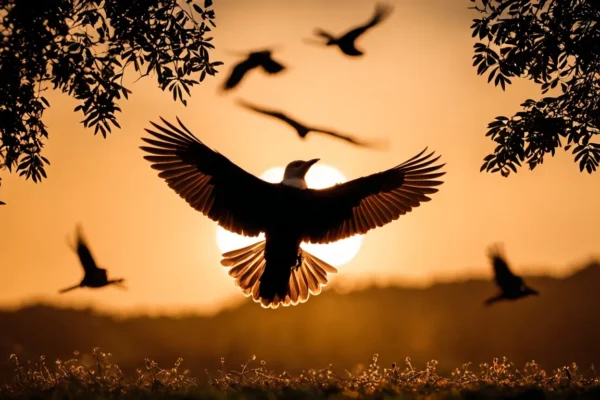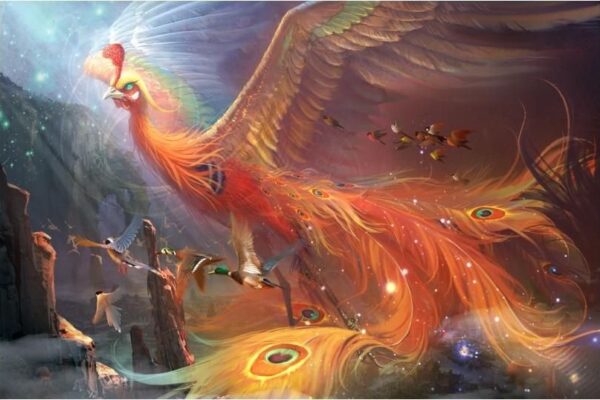Meet the Shoebill Stork – a bird that’s truly one of a kind! Hailing from Central Africa, these waders may be called storks, but they’ve got their own family called Balaenicipitidae. Now, what makes them stand out? Well, it’s all about that ginormous bill of theirs.
Picture this: Shoebill Storks can tower over four feet tall, weighing in at almost fifteen pounds. And when they spread their wings, it’s an impressive sight with a span reaching over eight feet. These big birds navigate through shallow, reed-filled wetlands using their long toes and feet to hunt for prey.
Now, despite their kinda scary look, Shoebills are actually chill when it comes to humans. But here’s the thing – these awesome birds are facing a tough time. They’re marked as “vulnerable” by the IUCN because their numbers are dropping, thanks to human-related issues. There are just a few thousand Shoebill Storks left.
Curious to know more about these giants? Stick around for some cool facts and a peek into how they size up against other big birds!
Surprising Facts about the Shoebill Stork

Scientific Name: Balaeniceps Rex
The scientific name of the shoebill stork is Balaeniceps rex. Derived from the genus name Balaeniceps and the suffix “rex,” meaning “king,” the name reflects the stork’s imposing and dominant presence in its habitat.
Aliases of the Shoebill: Whalehead Stork
Shoebill storks are alternately referred to as “whalehead storks,” a moniker inspired by their distinctive and massive bills.
Physical Attributes of Shoebill Storks
Shoebill storks command attention with their massive stature, towering above other birds with their long legs and spindly feet. Their wings, expansive and folding gracefully over their bodies, boast a distinctive blue-white color that contrasts with their muddy habitats. The unique coloration ranges from a lighter blue at the crown to a deeper navy blue at the feather tips.
The defining feature of the shoebill stork is undoubtedly its formidable beak, measuring an impressive 7 to 9 inches. Crafted from hard, keratin material and ending in a sharp nail on the upper mandible, the beak aids in tearing through prey. This yellow-hued beak, adorned with white and gray mottling, adds to the overall enigma of the shoebill stork.
Heights of Shoebill Storks
Standing tall at an average height of 3.5 to 4.5 feet, with exceptional individuals reaching up to five feet, shoebill storks dominate the avian landscape.
Weighing the Imposing Figures of Shoebill Storks
Males and females of the species exhibit slight differences in weight, with males weighing around 12 pounds and females slightly lighter at 11 pounds. The weight range for these majestic birds spans from 8.8 to 15.4 pounds.
The Grand Wingspan of Shoebill Storks
Boasting a wingspan of 7.7 to 8.6 feet, shoebill storks surpass their counterparts in the heron and hamerkop families. Only pelicans can claim a larger wingspan, solidifying the shoebill stork’s position as a remarkable avian marvel.
As we delve deeper into the realm of shoebill storks, we will uncover more mysteries, ranging from their feeding habits to their role in the delicate balance of ecosystems. Stay tuned for an adventure into the heart of Africa’s enchanting wetlands, where the shoebill stork reigns supreme.
Monogamy in Mating: The Bond of Shoebill Pairs
While it remains uncertain whether shoebill storks mate for life, during the breeding season, they form monogamous pairs. Although they spend most of their time apart, these pairs unite for nest preparation, egg incubation, hatchling protection, and the sharing of regurgitated food for their offspring.
Reproductive Maturity: The Three-Year Mark
Shoebill storks attain sexual maturity around the age of three, and it is presumed that they commence breeding shortly after reaching this stage.
Breeding Frequency
Shoebill storks engage in egg-laying once a year. The mating season typically aligns with the dry season in their habitat, but they may adjust to the end of the wet season if it extends beyond its usual duration, showcasing their adaptability.
Egg Characteristics and Sibling Dynamics
Shoebill storks lay round and substantial eggs, measuring 2 – 3 inches (5-7.6 cm) and weighing 5 – 6 ounces (141.7-170 gm). Each clutch usually contains 1 – 3 eggs. The survival of hatchlings is marked by intense sibling rivalry, where the older and stronger siblings may prey on the weaker ones. In harsh conditions with limited food, the runts of the brood may be sacrificed by the parents, emphasizing the survival challenges faced by these fascinating creatures.
Parental Care Among Shoebill Storks
Shoebill Storks may not win awards for their cuddliness, but when it comes to parental care, they showcase some intriguing behaviors. Demonstrating a surprising level of attention to their young, shoebill storks exhibit protective measures to ensure the well-being of their eggs and hatchlings.
During the incubation period, these storks diligently monitor the temperature of their eggs, especially in the scorching sun. Engaging in a practice known as “egg-watering,” they shower their nests with mouthfuls of water to prevent overheating. Further enhancing the nest’s comfort, they pad it with cool, wet grasses and stand guard to provide shade.
This attentiveness extends to young hatchlings without a protective layer of feathers. Shoebill parents offer shade and refreshing water showers when temperatures soar. Additionally, they maintain a rigorous feeding schedule, regurgitating food for their offspring up to six times a day, ensuring the nourishment needed for their survival.
While their parenting style might not be characterized by overt displays of affection, shoebill storks demonstrate a commitment to the continuation of their species.
Vocal Expressions of the Shoebill Stork
The shoebill stork communicates through various sounds, though it lacks a distinct call. Among its vocal repertoire, “bill-clattering” is the most common, characterized by short, rapid sounds produced with their beaks. Other vocalizations include croaks, hiccups, and cow-like moos, each serving a different purpose or emotion.

The Volume of Shoebill Sounds
The bill-clattering of shoebill storks can reach considerable volumes. Described as akin to a machine gun with its quick, sharp, and repetitive sounds, this vocalization resonates across the expanse of a swamp, exhibiting both speed and volume.
Head-Shaking Habit
Shoebill storks display a distinctive behavior of shaking their heads, a habit acquired from their hunting practices in water environments. While in the water, these birds shake their heads to dislodge sticky weeds that may cling to their prey, aiding in a cleaner consumption.
This habitual head-shaking, though seemingly without purpose on dry land, persists as a remnant behavior, resembling a nervous tic to those unfamiliar with its origin.
Habitat of Shoebill Storks
Shoebill storks are indigenous to Africa, primarily inhabiting a specific region of the sub-Sahara that encompasses countries such as Uganda, Zambia, Sudan, Tanzania, and Zaire.
Preferred Dwellings
Shoebills find solace in wet and muddy habitats, favoring swamps and marshes. These environments, rich in water sources, are crucial for their feeding habits centered around fish and aquatic creatures.
The shoebill’s ideal habitat includes an array of vegetation such as weeds, reeds, rushes, and papyrus plants. They perch on floating vegetation during hunting, showcasing a preference for densely populated areas with abundant plant life and potential prey.
Shoebill Storks and Water Quality
Shoebill storks are indifferent to the depth of water but prioritize its oxygenation. Swamps with poor oxygenation force fish to surface more frequently, offering the shoebill stork increased opportunities for feeding. This strategic adaptation underscores their resourceful nature.
Nesting Habits
Shoebill storks construct partially submerged nests in secluded and protected locations. These nests, often situated on floating platforms of reeds, involve clearing and flattening an area, followed by the weaving of long grasses to create a soft bedding for their eggs.
Sushi, the Bowing Shoebill
Notable among shoebill storks is an individual named Sushi, who resides in the Uganda Wildlife Education Center. This particular shoebill has gained attention for its distinctive behavior of bowing to human guests.
This behavior, not characteristic of shoebills in general, earned Sushi its name as a nod to Japanese culture, reflecting its manners reminiscent of bowing.
Real-Life Marvels: Debunking Photoshop Claims
While the shoebill stork’s appearance may lead some to question its authenticity, these majestic birds are indeed real. Thriving in the wetlands of central Africa, shoebill storks possess unique features that aid them in various aspects of their lives, including hunting, nesting, mating, and territorial defense.
The Dichotomy of Shoebill Stork Behavior
In the wild, shoebill storks exhibit a certain level of aggression, earning them titles such as “the stork of nightmares” and “the most terrifying bird in the world.” However, in captivity, their demeanor takes a gentle turn. Often found in zoos and animal parks, they tolerate human observation without displaying the wild aggressiveness associated with their species.
Unveiling the Mystery of Shoebill Storks
The identity of shoebill storks might not be as straightforward as their name suggests. Once considered part of the stork family, recent genetic testing has revealed a closer kinship with pelicans and herons. Despite this reclassification under the pelecaniformes label, the term “shoebill stork” persists in common usage.
Are They True Storks?
While the name “shoebill stork” endures, it’s essential to recognize that, scientifically, shoebills are not storks. Initially grouped under ciconiiformes alongside black storks and marabou storks, genetic analysis prompted a shift to the pelecaniformes category, aligning them more closely with pelicans and herons.
Can Shoebills Fly?
Shoebills possess the ability to take flight, although their flying prowess may not be as remarkable as some other bird species. When faced with threats or seeking new feeding grounds, they engage in low and swift flights. Preferring altitudes below 1,000 feet, shoebills navigate the air with a deliberate wing-flapping rate of 150 flaps per minute, a pace slower than many fellow avians. Additionally, they opt for gliding on thermals when possible rather than strenuous wing flapping.
The Shoebill’s Distinctive Name
The distinctive name “shoebill” finds its roots in the remarkable beaks of these avian wonders. Characterized by their size, shape, and color, shoebill storks’ beaks often resemble the clogs crafted by cobblers. This comparison has ancient origins, with Arabian countries historically referring to shoebills as “abu markub,” translating to “one with a shoe.” Even in ancient Egyptian art, depictions of shoebills showcased beaks reminiscent of the footwear prevalent in that era.
Debunking Extinction Myths
Contrary to misconceptions, shoebill storks are very much alive today. Any mention of extinction likely pertains to fossilized remains discovered in the Middle East. Named “Goliathia” and “Paludavis,” these ancient birds, with similar diets and habitats as shoebills, are considered potential ancestors of the modern shoebill. The living shoebill storks continue to thrive in the swamps and marshes of central Africa.
As we delve deeper into the enigmatic world of shoebill storks, we’ll uncover more intricacies, from their behavioral quirks to their significance in the ecological tapestry of their habitats. Stay tuned for a comprehensive exploration of these captivating avian wonders.
Survival Strategies
Sweating is not an option for shoebill storks in the scorching African sun. Instead, they employ a unique technique called gular fluttering. This involves vibrating the muscles in their mouth and throat, facilitating the dissipation of heat. Similar to a dog panting on a warm day, gular fluttering is a vital mechanism for shoebill storks to regulate their body temperature.
Aggression and Territorial Behavior
Shoebill storks exhibit aggression, starting from their early days. In the nest, the firstborn often dominates, while the second and third hatchlings may face neglect or even expulsion by their sibling. Astonishingly, the parents tolerate this hierarchy. As adults, shoebills maintain a solitary nature, fiercely defending their territories. These territories extend up to a mile in every direction from a central point. Even within their species, shoebills avoid close proximity, with breeding pairs keeping their distance from each other.
Shoebill storks’ territorial instincts extend to interactions with other birds, displaying aggression when their space is invaded. Researchers have observed shoebills hunting in groups with significant distances between them, emphasizing their preference for independence.
Shoebill Stork Lifespan
According to the Max Planck Institute for Demographic Research, shoebill storks can live up to 35 years in captivity. While their lifespan in the wild may be slightly shorter, these birds boast impressive longevity.
The Strategic “Statue” Persona
Often teased for their seemingly lazy demeanor, shoebills earn monikers like “statues” or “marble sculptures.” Contrary to the perception of idleness, these moments of stillness are a key aspect of their hunting strategy. Remaining perfectly motionless for hours, shoebills stay vigilant with heightened senses, waiting for the opportune moment to strike. Far from lazy, this behavior is a finely tuned feeding strategy.
Predators and Threats
Shoebill storks, with their imposing size and territorial nature, face few predators. While occasional attacks from hungry predators may occur, shoebills do not fall prey to systematic predation by other species. Their primary vulnerability lies in the pre-hatching stage, where eggs and hatchlings may be targeted by opportunistic creatures seeking a protein-rich meal. However, the fierce protection of mother shoebills makes such encounters perilous for potential attackers.
Wanderers of the Wetlands
While shoebills don’t embark on traditional migrations, they are known to relocate when resources become scarce in their current habitat. Sometimes, individual shoebills venture far beyond their typical range, leaving their fellow storks behind. Vagrant shoebills have been spotted hundreds of miles away from their natural habitats.
The Mighty Beak
The large beak of shoebill storks serves multiple purposes. While its primary function is believed to aid in hunting, allowing them to capture and consume prey efficiently, another theory suggests its role in the cooling mechanism of gular fluttering. The unique beak, comprised of hard keratin and featuring a sharp nail, represents a distinctive adaptation that contributes to the survival strategies of shoebill storks in their challenging environments.
Diverse Diets of the Shoebill Stork
Shoebill storks primarily feast on a variety of fish, displaying a preference for lungfish, catfish, tilapia, and bichirs. Their diet extends beyond aquatic creatures to include frogs, turtles, lizards, snakes, reptiles, rodents, and occasionally smaller waterfowl like ducks and geese.
In an extraordinary display of their hunting prowess, shoebill storks have been observed consuming even baby crocodiles. These skilled hunters patiently wait for opportune moments, often seizing the chance when the young crocodile is left unguarded by its parents.
Known for their voracious appetite, shoebills will readily devour anything that fits within their colossal bills.
The Art of Shoebill Hunting
The hunting habits of shoebill storks contribute to their formidable reputation. These birds fearlessly pursue large prey and exhibit no mercy in their pursuit.
Shoebills are adept at hunting in water environments. Whether wading in shallow creek beds or standing atop floating vegetation in swamps, they showcase remarkable patience as they await prey. A swift and violent strike ensues once a tempting target is spotted, either killing the prey instantly or rendering it stunned enough to be ensnared in the shoebill’s massive beak.
Following a successful strike, shoebills employ head-shaking motions to expel water and algae, ensuring a clean meal. Their powerful beaks, akin to weapons, can either swallow the prey whole or facilitate decapitation for easier consumption.
Replete after a meal, shoebills return to a motionless state, patiently awaiting their next unsuspecting victim.
Encounters with Shoebill Storks
Observing shoebill storks firsthand requires a visit to specific zoos, parks, or wildlife centers around the world. These unique birds are housed in only a limited number of locations, and spotting them in the wild proves challenging, as safari tours often do not include their muddy habitats.
To witness a shoebill stork in person, reaching out to their respective zoos and arranging a visit is the most viable option.
Threats to The Existence of Shoebills
Shoebill storks face two significant threats:
Habitat Loss:
As human activities expand, including ranching, farming, drilling, damming, and construction, shoebills lose their natural habitats. This not only leaves them without adequate shelter but also depletes their prey, pushing them to the brink of hunger.
Human Activities:
Hunted for meat, sought after as unique trophies, and illegally traded internationally, shoebill storks are victims of human actions. The demand for these exotic birds, particularly the young ones, fuels a black market where prices can reach $10,000 – $20,000.
Conservation Measures in Action
Many countries have implemented protective laws against hunting, killing, selling, or consuming shoebill storks. Despite challenges with enforcement, these laws have curbed the black market trade. Furthermore, legal protection has increased awareness, rallying public support for shoebill conservation. Heightened awareness proves to be a valuable ally in the ongoing efforts to preserve these majestic birds.
Shoebill storks hold a “vulnerable” status according to the International Union for the Conservation of Nature (IUCN). Although not yet endangered, their population is dwindling. With an estimated 3,300 – 5,300 mature adults globally, the trend is concerning. Reproduction rates are outpaced by threats, as capturing and killing surpass the storks’ natural ability to replenish their numbers.
Repopulation efforts face challenges as shoebills are reluctant to mate in captivity. Zoos struggle to produce hatchlings, emphasizing the critical role of the wild population in sustaining the species.





